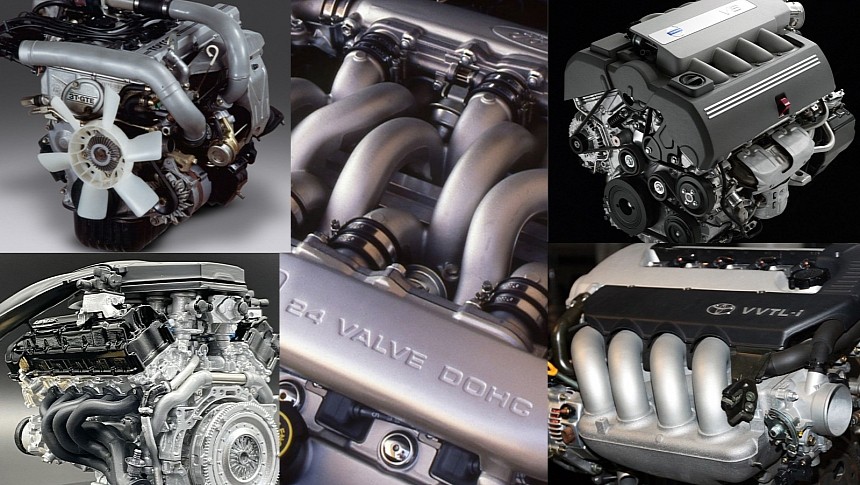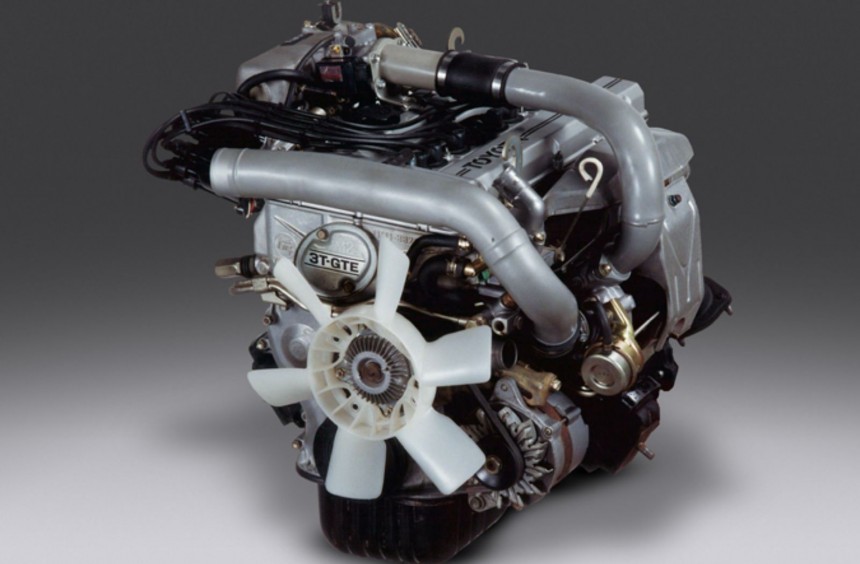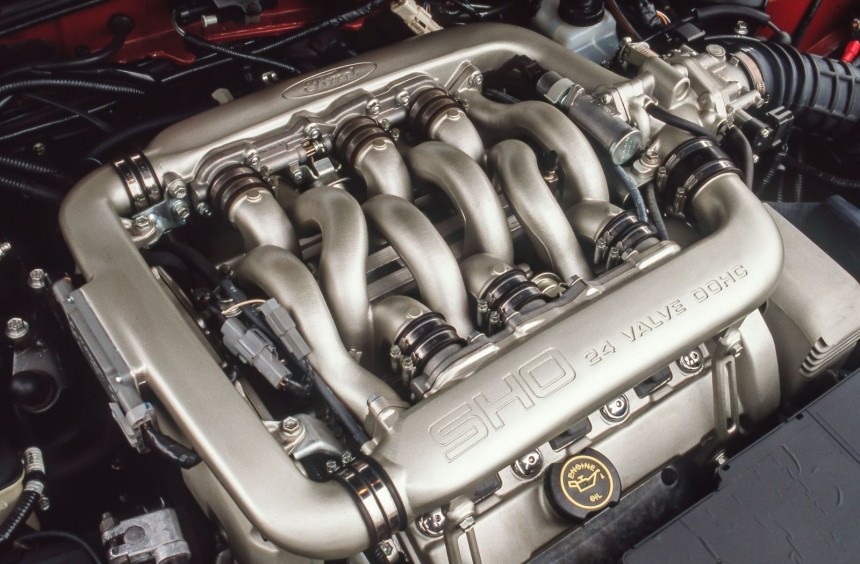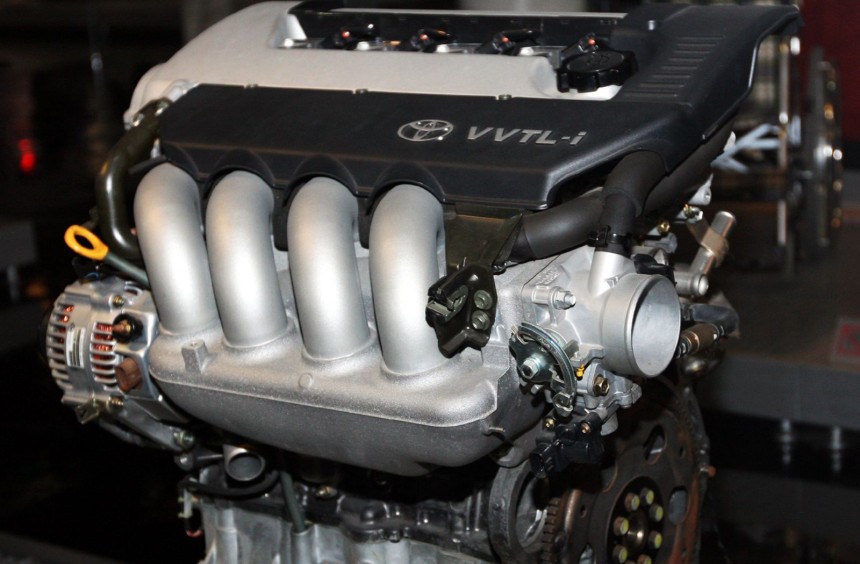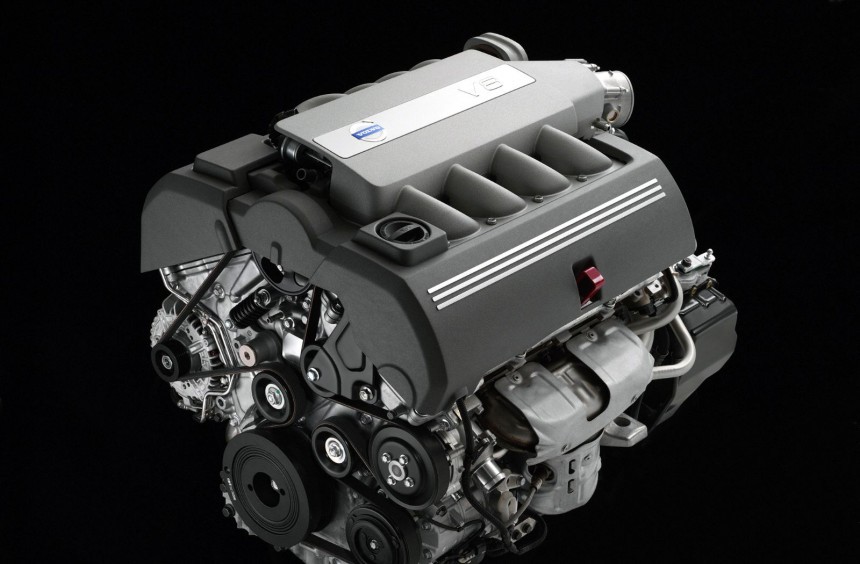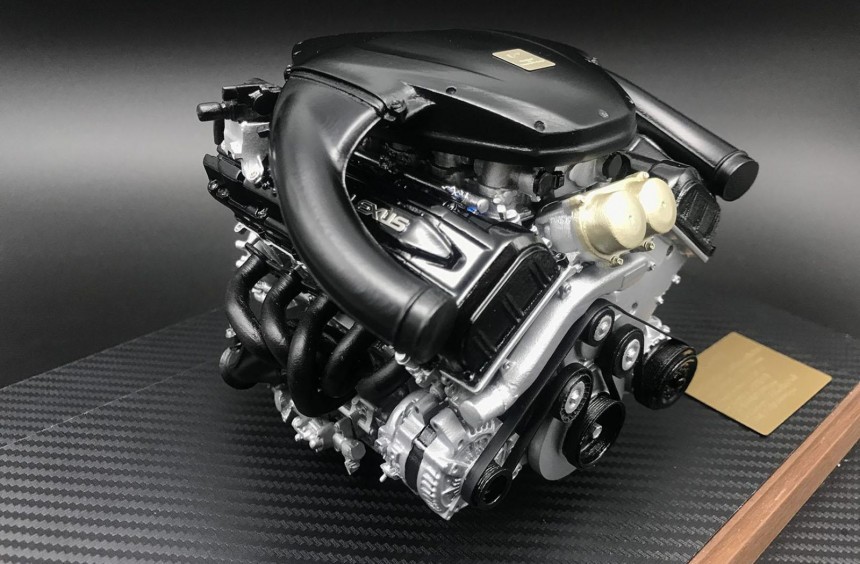Though famous for its motorcycles, the Yamaha Motor Company also took its talents to the automotive industry by helping develop some terrific engines.
Founded in the spring of 1955, the Yamaha Motor Company is known across the globe by gearheads for developing some of the greatest motorcycles ever produced.
But, the Japanese company also branched out to the automotive industry throughout the decades.
In the sixties, it played a vital role in the development of the legendary Toyota 2000GT, and in the early 1990s, it designed the OX99-11, an F1 V12-powered supercar that, unfortunately, never made it past the prototype stage.
Apart from that, Yamaha helped design and/or manufacture many car engines. Most were Toyota units, but some were created for other companies, such as Ford or Volvo.
Yamaha and Toyota enjoyed a long collaboration that led to the development of many great engines, including the carmaker's first production V8 (aka Toyota Hemi) and its only production V10, but also a series of smaller inline-fours.
One of the most innovative Toyota straight-fours produced with Yamaha's help is the 3T-GTE.
Based on the architecture of the regular 3T unit introduced in 1977, the 3T-GTE was Japan's first turbocharged DOHC engine.
First released in 1982, the 1.8-liter featured hemispherical combustion chambers, electronic fuel injection, two valves per cylinder, twin spark plugs, and swirl intake ports for improved efficiency. It was rated at 160 hp and 152 lb-ft (206 Nm) of torque.
At the time of its release, it was one of the most over-engineered, mass-produced four-cylinders, and it is still revered for its bombproof reliability.
Used by performance versions of the Celica, Carina, and Corona, the 3T-GTE also served as the base for the 4T-GTE race engine that Toyota campaigned in the JGTC, IMSA GTO, and WRC competitions.
In the 1980s, the blue oval needed a compact performance V6 that could be transversally mounted, but instead of designing one, the company commissioned Yamaha to do it.
To be more specific, Ford was already working on a V6 codenamed Vulcan, but its engineers couldn't make it compact and powerful enough.
Fully engineered and assembled in Japan, the SHO (Super High Output) was loosely based on the Vulcan, but thanks to Yamaha, it became a lot more high-tech.
Displacing either 3.0 or 3.2 liters, the SHO featured an iron block, an aluminum DOHC head with 24 valves, and an innovative variable-length intake manifold.
Naturally aspirated, the high-revving motor could make 220 hp and either 200 lb-ft (271 Nm) or 215 lb-ft (292 Nm) of torque, depending on the displacement version.
The SHO V6 powered the 1989 -1995 Ford Taurus SHO, one of the era's most underrated high-performance sedans.
This successful project led to another Yamaha-developed Ford engine, the larger SHO V8, which succeeded the V6 under the hood of the third-generation Taurus SHO.
As I mentioned before, Yamaha helped Toyota develop many great engines, and another noteworthy example is the 2ZZ-GE.
Its story started in the late 1990s when the Japanese carmaker wanted to design a performance-oriented version of its ZZ straight-four.
To do that, Toyota tasked its long-time partner with developing the new motor's cylinder head, and the 2ZZ-GE was born.
An all-aluminum with a displacement of 1.8 liters, the engine featured forged steel connecting rods, redesigned pistons, and an advanced multi-point fuel injection system (VVTL-i) similar to Honda's VTEC.
Able to rev past the 7,500 RPM mark, the four-cylinder powered several performance versions of Toyota models like the Corolla and Celica, the first-gen Pontiac Vibe, and three Lotus models (Elise, Exige, and 2-Eleven).
Initially naturally aspirated, it made between 160 and 189 hp. However, Lotus chose to fit an intercooled supercharger onto it, boosting output all the way up to 256 hp.
Produced from 2005 to 2010, the B8444S was an all-aluminum, 60-degree V8 that powered the first-gen XC90 and second-gen S80 Volvo models.
Officially, it was entirely designed by the Swedish carmaker, which enlisted Yamaha to help manufacture it.
However, since its bore centers, stroke, bearing journal diameters, and deck height were the same as the Ford SHO V8, it's safe to assume that Yamaha did more than just build the engine.
With a displacement of 4.4 liters, the B8444S made 311 hp and 325 lb-ft (440 Nm) of torque.
This engine was also used in the Noble M600, an exquisite handbuilt British sports car. With a high-flow fuel injection system and twin turbos, output was pushed to an impressive 650 hp and 604 lb-ft (819 Nm) of torque.
Moreover, a 5.0-liter race version was built by Garry Rogers Motorsport for use in the Supercar Championship held in Australia and New Zealand.
During the 2000s, Toyota decided to build the most spectacular supercar to ever come out of Japan and market it under its premium Lexus brand.
One of the project's goals was to give the car an F1-inspired V10 heart, and, of course, the task was handed down to Yamaha.
Codenamed 1LR-GUE, the piece of engineering art was fabricated using aluminum, magnesium, and titanium alloys.
It featured a forged crankshaft, titanium conrods, forged pistons designed to withstand the 12:1 compression ratio, and ten independent throttle bodies.
The magnesium valve covers hid titanium rods and valves, ultra-light solid rockers, and a dual-VVTi system.
Displacing 4.8 liters and able to rev up to 9,000 RPM, the Lexus LFA's V10 made 552 hp and 354 lb-ft (480 Nm) torque.
Moreover, it sang an incredibly addictive tune, thanks to the exhaust system developed in partnership with Yamaha's musical instrument and audio equipment manufacturing division.
To this day, it remains the only production V10 from Japan and the most spectacular engine ever developed in the land of the rising sun.
But, the Japanese company also branched out to the automotive industry throughout the decades.
In the sixties, it played a vital role in the development of the legendary Toyota 2000GT, and in the early 1990s, it designed the OX99-11, an F1 V12-powered supercar that, unfortunately, never made it past the prototype stage.
Apart from that, Yamaha helped design and/or manufacture many car engines. Most were Toyota units, but some were created for other companies, such as Ford or Volvo.
Toyota 3T-GTE
One of the most innovative Toyota straight-fours produced with Yamaha's help is the 3T-GTE.
Based on the architecture of the regular 3T unit introduced in 1977, the 3T-GTE was Japan's first turbocharged DOHC engine.
First released in 1982, the 1.8-liter featured hemispherical combustion chambers, electronic fuel injection, two valves per cylinder, twin spark plugs, and swirl intake ports for improved efficiency. It was rated at 160 hp and 152 lb-ft (206 Nm) of torque.
At the time of its release, it was one of the most over-engineered, mass-produced four-cylinders, and it is still revered for its bombproof reliability.
Used by performance versions of the Celica, Carina, and Corona, the 3T-GTE also served as the base for the 4T-GTE race engine that Toyota campaigned in the JGTC, IMSA GTO, and WRC competitions.
Ford SHO V6
To be more specific, Ford was already working on a V6 codenamed Vulcan, but its engineers couldn't make it compact and powerful enough.
Fully engineered and assembled in Japan, the SHO (Super High Output) was loosely based on the Vulcan, but thanks to Yamaha, it became a lot more high-tech.
Displacing either 3.0 or 3.2 liters, the SHO featured an iron block, an aluminum DOHC head with 24 valves, and an innovative variable-length intake manifold.
Naturally aspirated, the high-revving motor could make 220 hp and either 200 lb-ft (271 Nm) or 215 lb-ft (292 Nm) of torque, depending on the displacement version.
The SHO V6 powered the 1989 -1995 Ford Taurus SHO, one of the era's most underrated high-performance sedans.
This successful project led to another Yamaha-developed Ford engine, the larger SHO V8, which succeeded the V6 under the hood of the third-generation Taurus SHO.
Toyota 2ZZ-GE
Its story started in the late 1990s when the Japanese carmaker wanted to design a performance-oriented version of its ZZ straight-four.
To do that, Toyota tasked its long-time partner with developing the new motor's cylinder head, and the 2ZZ-GE was born.
An all-aluminum with a displacement of 1.8 liters, the engine featured forged steel connecting rods, redesigned pistons, and an advanced multi-point fuel injection system (VVTL-i) similar to Honda's VTEC.
Able to rev past the 7,500 RPM mark, the four-cylinder powered several performance versions of Toyota models like the Corolla and Celica, the first-gen Pontiac Vibe, and three Lotus models (Elise, Exige, and 2-Eleven).
Initially naturally aspirated, it made between 160 and 189 hp. However, Lotus chose to fit an intercooled supercharger onto it, boosting output all the way up to 256 hp.
Volvo B8444S
Officially, it was entirely designed by the Swedish carmaker, which enlisted Yamaha to help manufacture it.
However, since its bore centers, stroke, bearing journal diameters, and deck height were the same as the Ford SHO V8, it's safe to assume that Yamaha did more than just build the engine.
With a displacement of 4.4 liters, the B8444S made 311 hp and 325 lb-ft (440 Nm) of torque.
This engine was also used in the Noble M600, an exquisite handbuilt British sports car. With a high-flow fuel injection system and twin turbos, output was pushed to an impressive 650 hp and 604 lb-ft (819 Nm) of torque.
Moreover, a 5.0-liter race version was built by Garry Rogers Motorsport for use in the Supercar Championship held in Australia and New Zealand.
Toyota 1LR-GUE
One of the project's goals was to give the car an F1-inspired V10 heart, and, of course, the task was handed down to Yamaha.
Codenamed 1LR-GUE, the piece of engineering art was fabricated using aluminum, magnesium, and titanium alloys.
It featured a forged crankshaft, titanium conrods, forged pistons designed to withstand the 12:1 compression ratio, and ten independent throttle bodies.
The magnesium valve covers hid titanium rods and valves, ultra-light solid rockers, and a dual-VVTi system.
Displacing 4.8 liters and able to rev up to 9,000 RPM, the Lexus LFA's V10 made 552 hp and 354 lb-ft (480 Nm) torque.
Moreover, it sang an incredibly addictive tune, thanks to the exhaust system developed in partnership with Yamaha's musical instrument and audio equipment manufacturing division.
To this day, it remains the only production V10 from Japan and the most spectacular engine ever developed in the land of the rising sun.
